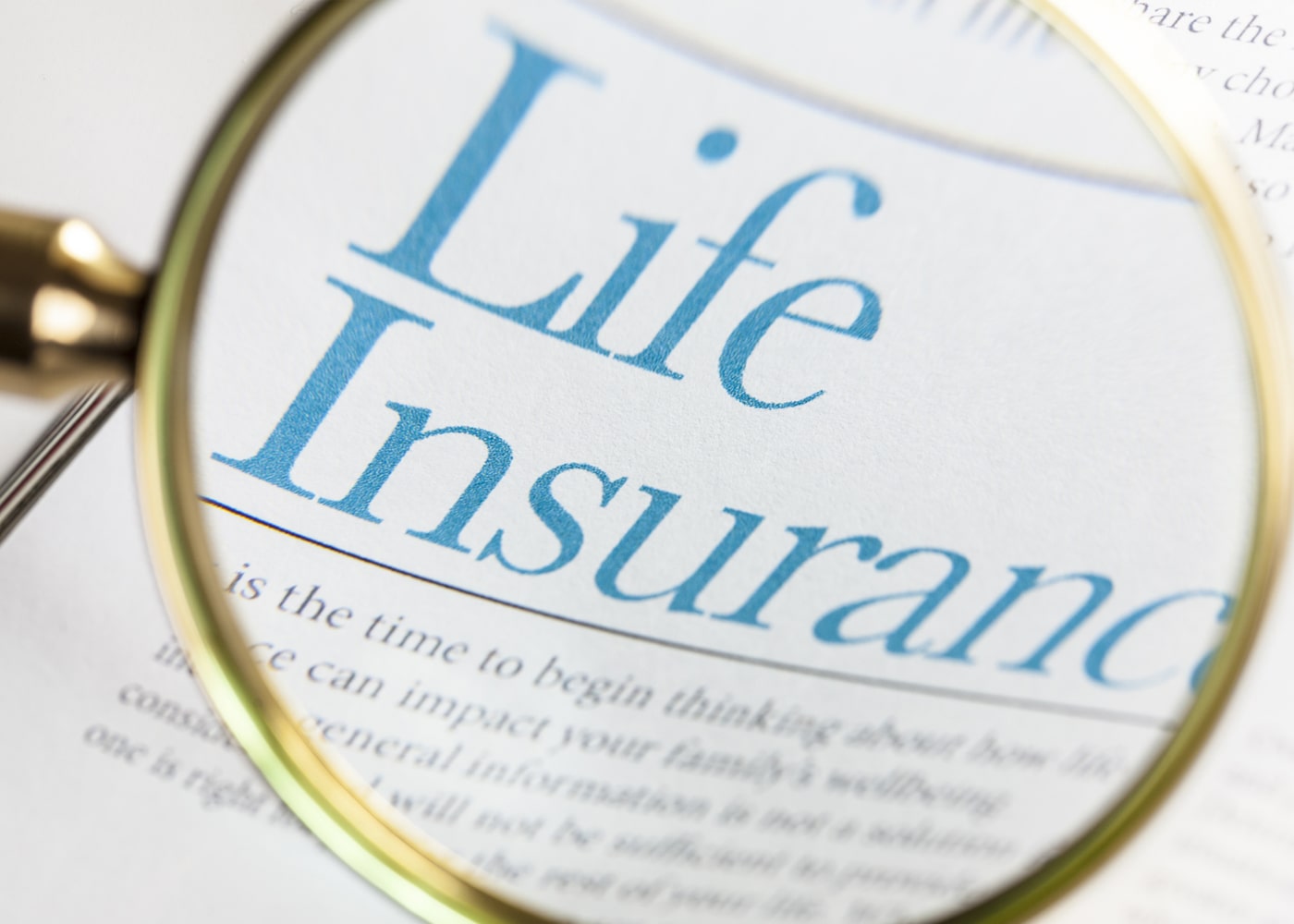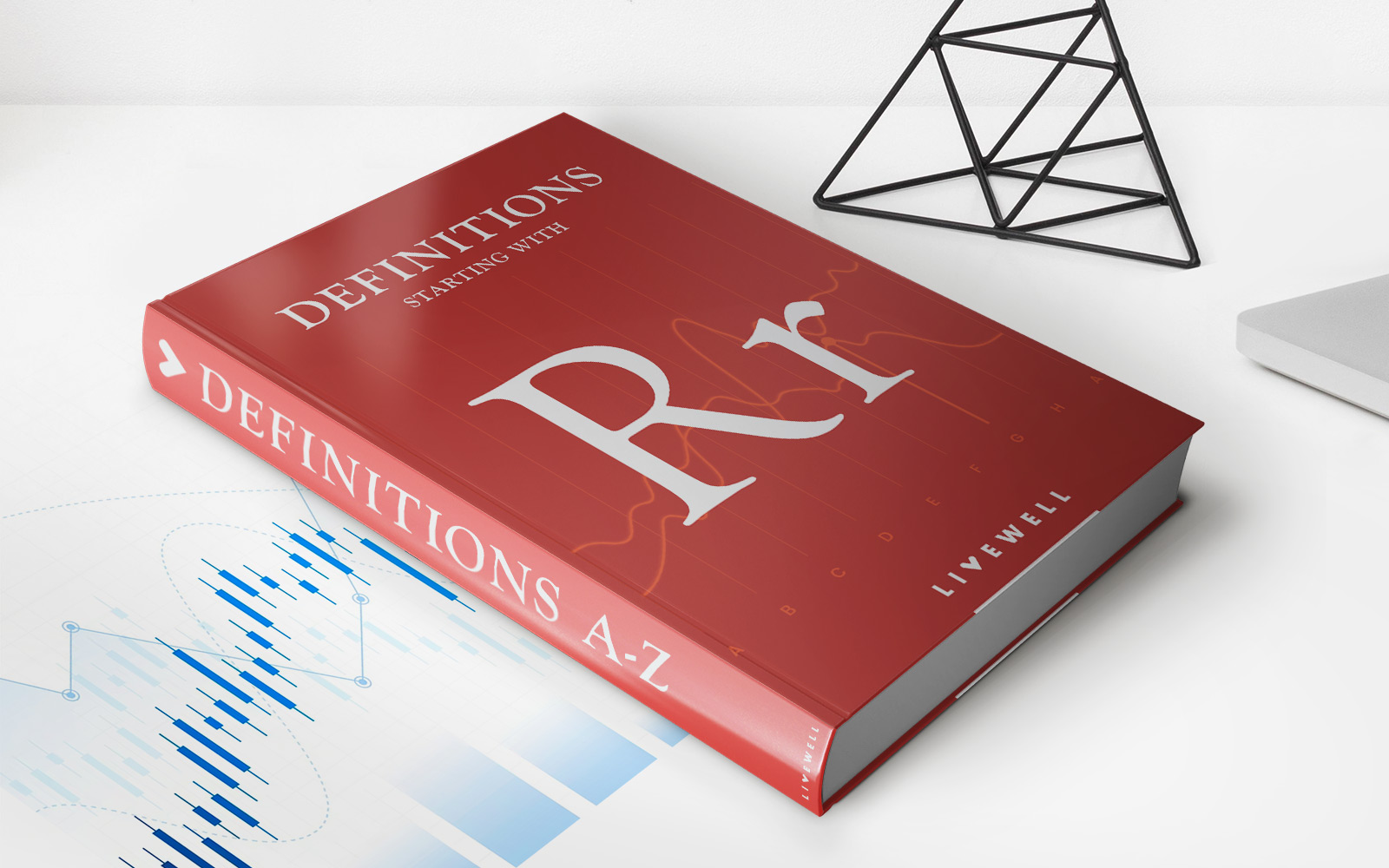

Finance
What Is EE Life Insurance
Modified: February 21, 2024
Discover the importance of EE life insurance in securing your financial future. Explore how this finance option can provide you with peace of mind and protection for your loved ones.
(Many of the links in this article redirect to a specific reviewed product. Your purchase of these products through affiliate links helps to generate commission for LiveWell, at no extra cost. Learn more)
Table of Contents
Introduction
Welcome to the world of EE Life Insurance! If you’re new to the realm of personal finance, you may be wondering what exactly EE Life Insurance is and why it’s important. In this article, we will explore the ins and outs of EE Life Insurance, including its definition, how it works, and the benefits it provides.
Life is full of uncertainties, and it’s crucial to plan for the unexpected. EE Life Insurance is a financial tool that provides protection and financial security to your loved ones in the event of your passing. It allows you to leave behind a financial safety net that can help your family cover expenses such as mortgage payments, education costs, and everyday living expenses.
EE Life Insurance offers peace of mind by ensuring that your family’s future remains secure even if you’re no longer there to provide for them. It serves as a safeguard against financial hardship and can give your loved ones the necessary resources to maintain their quality of life.
Whether you’re starting a family, planning for retirement, or simply looking for a way to protect your loved ones, EE Life Insurance can play a vital role in your financial strategy. It’s important to understand how it works, the different types of coverage available, and the factors to consider when choosing a policy.
Throughout this article, we’ll delve deeper into the intricacies of EE Life Insurance, debunk common misconceptions, and shed light on the various aspects you should consider before making your decision. So, let’s dive in and uncover the world of EE Life Insurance to ensure your financial well-being and the security of your loved ones.
Definition of EE Life Insurance
EE Life Insurance, also known as Employee-Employer Life Insurance or Group Life Insurance, is a type of life insurance policy provided by an employer to its employees. This insurance coverage is typically offered as part of an employee benefits package and is designed to provide financial protection to the insured individual’s beneficiaries in case of their untimely death.
When you have EE Life Insurance, your employer takes on the role of the policyholder, while you are the insured individual, and your beneficiaries will receive the death benefit in the event of your passing. The death benefit is a lump sum payment, typically a multiple of your annual salary or a fixed amount predetermined by the employer.
One of the key aspects of EE Life Insurance is that it is typically offered to all eligible employees as a group policy, meaning that a single policy covers multiple employees. This makes it a cost-effective option for employers as they are able to negotiate lower premiums based on the collective risk pool of all their employees.
It’s important to note that the coverage provided by EE Life Insurance is typically limited and may not be sufficient to meet all the financial needs of your beneficiaries. Therefore, it is advisable to supplement your EE Life Insurance coverage with additional individual life insurance if you have dependents or specific financial obligations that require more substantial coverage.
Overall, EE Life Insurance is a valuable employee benefit that provides financial security to employees and their families. It offers peace of mind knowing that if the unexpected were to happen, their loved ones will be protected from the financial burdens associated with the loss of income.
How EE Life Insurance Works
Understanding how EE Life Insurance works is crucial for employees who want to make the most out of their coverage. Here’s a breakdown of the key components and processes involved:
1. Enrollment: When you start a new job, your employer will offer EE Life Insurance as part of the benefits package. You will have a designated enrollment period to sign up for the coverage. During this time, you will need to provide basic information such as your age, gender, and salary, which will be used to calculate your premium.
2. Group Policy: EE Life Insurance is typically offered as a group policy, meaning that all eligible employees are automatically covered under the same policy. This pooling of risk allows the insurer to provide coverage at a lower cost compared to individual policies.
3. Premiums: The cost of your EE Life Insurance coverage is funded through monthly premiums deducted from your paycheck. These premium amounts are based on several factors, including your age, health, salary, and the size of the death benefit you choose.
4. Death Benefit: The death benefit is the amount of money that will be paid out to your beneficiaries upon your passing. This benefit is typically a multiple of your annual salary or a fixed amount chosen by your employer. It is important to review and understand the death benefit amount to ensure it is sufficient to meet your family’s financial needs.
5. Beneficiaries: You will need to designate one or more beneficiaries who will receive the death benefit in case of your untimely death. It is essential to keep your beneficiaries updated if any changes occur in your personal life, such as marriage, divorce, or the birth of a child.
6. Coverage Termination: Your EE Life Insurance coverage typically ends when you leave your employment or when the policy terminates. In some cases, you may have the option to convert your group policy to an individual policy or port your coverage to a new employer’s plan.
7. Claims Process: In the unfortunate event of your death, your beneficiaries will need to file a claim with the insurance company. They will be required to provide necessary documentation, such as a death certificate, to initiate the claims process. The insurance company will review the claim and, once approved, disburse the death benefit to the designated beneficiaries.
It’s important to note that EE Life Insurance is a valuable benefit provided by your employer, but it may have limitations compared to individual life insurance policies. Therefore, it’s advisable to assess your coverage needs and consider additional life insurance options to ensure your loved ones are adequately protected.
Benefits of EE Life Insurance
EE Life Insurance offers several significant benefits to employees and their loved ones. Let’s explore some of the key advantages of having this type of coverage:
1. Financial Protection: The primary benefit of EE Life Insurance is the financial protection it provides to your beneficiaries in the event of your passing. The death benefit they receive can help cover immediate expenses such as funeral costs, outstanding debts, and medical bills.
2. Peace of Mind: Knowing that your loved ones will be taken care of financially can bring you peace of mind. EE Life Insurance ensures that your family will have the necessary funds to maintain their lifestyle and meet financial obligations, even if you’re no longer there to provide for them.
3. Cost-Effective: Compared to individual life insurance policies, EE Life Insurance is generally more affordable due to the group rates negotiated by your employer. This can be a cost-effective way to obtain coverage and ensure financial security for your family.
4. No Medical Exam Required: In most cases, EE Life Insurance does not require a medical examination to enroll in coverage. This can be advantageous for individuals with pre-existing medical conditions or those who may have difficulty obtaining standard life insurance policies.
5. Additional Coverage Options: Many EE Life Insurance policies offer the flexibility to add optional coverage, such as accidental death and dismemberment insurance or dependent life insurance. These additional options can provide added protection and help mitigate financial risks in specific circumstances.
6. Portability: Depending on the terms of your policy, you may have the option to take your EE Life Insurance coverage with you if you leave your current job. This portability can provide continuity of coverage and avoid any gaps during the transition to a new employer.
7. Tax Advantages: In some cases, the premiums you pay for EE Life Insurance may be tax-deductible, depending on the tax laws in your country. It’s advisable to consult with a tax professional to understand the specific tax benefits that may apply to your situation.
Overall, EE Life Insurance offers a range of benefits that can help protect your loved ones financially and provide peace of mind. It’s important to assess your coverage needs and understand the terms and limitations of your policy to ensure it aligns with your long-term financial goals.
Drawbacks of EE Life Insurance
While EE Life Insurance offers numerous benefits, it’s essential to consider the potential drawbacks before making a decision. Here are some of the drawbacks associated with this type of coverage:
1. Limited Coverage Amount: One of the main drawbacks of EE Life Insurance is that the coverage amount provided may be limited. The death benefit is often based on a multiple of your salary, which may not be enough to cover all the financial needs of your beneficiaries, especially if you have significant financial obligations or dependents.
2. Lack of Customization: EE Life Insurance is a group policy provided by your employer, meaning you have limited control over the policy terms and coverage options. You may not have the flexibility to customize the policy to suit your individual needs or add specific riders or provisions that you may prefer with individual life insurance policies.
3. Loss of Coverage upon Employment Termination: Your EE Life Insurance coverage typically ends when you leave your job or when the policy terminates. If you rely solely on this coverage, you may face a gap in protection if you experience a job loss or transition to a new employer who does not offer this benefit. It’s important to have a contingency plan in place to ensure continuous coverage.
4. Inability to Convert to Individual Policy: In some cases, when you leave your job, you may have the option to convert your group policy to an individual policy. However, the conversion options, terms, and premiums may not be as favorable as securing an individual policy from the outset. It’s crucial to explore your conversion options to determine if they align with your coverage needs and budget.
5. Limited Portability: While portability is often touted as an advantage of EE Life Insurance, the ability to take your coverage with you may come with limitations. The new employer may not offer a comparable group policy, or the premiums associated with porting the coverage may be significantly higher. It’s important to assess the portability provisions of your policy and consider alternative coverage options if needed.
6. No Cash Value Accumulation: Unlike some types of permanent life insurance policies, EE Life Insurance does not typically accumulate cash value over time. This means you cannot borrow against the policy or use it as an investment vehicle. If cash value accumulation is a priority for you, you may need to explore other life insurance options.
It’s crucial to evaluate these drawbacks in the context of your personal circumstances and financial goals. While EE Life Insurance may have its limitations, it can still serve as a valuable safety net for your loved ones. However, it’s advisable to review your coverage needs and consider supplementing your EE Life Insurance with additional individual policies if necessary.
Types of EE Life Insurance Coverage
EE Life Insurance offers different types of coverage to meet the diverse needs of employees. Let’s explore some of the common types of EE Life Insurance coverage:
1. Basic Group Term Life Insurance: This is the most common type of EE Life Insurance coverage provided by employers. It offers a fixed death benefit amount and is typically based on a multiple of the employee’s annual salary. Basic Group Term Life Insurance provides financial protection to the employee’s beneficiaries in case of death during the coverage period.
2. Supplemental Group Term Life Insurance: This option allows employees to increase their coverage beyond the basic group policy. Employees can choose to purchase additional coverage, often in increments, up to a specified maximum limit. Supplemental coverage helps bridge the gap between the basic policy benefits and an employee’s actual coverage needs.
3. Accidental Death and Dismemberment (AD&D) Insurance: AD&D insurance provides coverage in the event of accidental death, dismemberment, or loss of certain bodily functions. It pays a death benefit or a specified amount if the insured person suffers a covered accidental injury or accident-related death. AD&D insurance offers an added layer of protection for accidents that may not be covered by basic life insurance.
4. Dependent Life Insurance: Some employers offer the option to extend life insurance coverage to dependents of employees, such as spouses and children. Dependent Life Insurance provides a death benefit if the covered dependent passes away during the policy period. It offers an opportunity to secure financial protection for your loved ones in addition to your own coverage.
5. Business Travel Accident Insurance: This type of coverage provides financial protection to employees who travel for business purposes. It offers coverage in case of accidents, injury, or death that occur while traveling on company business. Business Travel Accident Insurance is typically a separate policy designed to cover travel-related risks that may not be covered under basic life insurance.
It’s important to review the specific coverage options available through your employer and understand the terms and limitations of each policy. Consider your individual circumstances and coverage needs to choose the types of EE Life Insurance coverage that will provide the most comprehensive protection for you and your loved ones.
Factors to Consider When Choosing EE Life Insurance
When it comes to selecting EE Life Insurance coverage, several factors should be taken into consideration to ensure you make the right choice for your personal circumstances. Here are some essential factors to consider:
1. Coverage Amount: Evaluate your financial needs and obligations to determine the appropriate coverage amount. Consider factors such as outstanding debts, mortgage payments, education expenses, and future income replacement needs. It’s important to choose a coverage amount that will adequately protect your loved ones and provide financial security in case of your passing.
2. Premiums and Affordability: Review the premium costs associated with the EE Life Insurance coverage options. Ensure that the premiums fit within your budget without causing financial strain. Compare the premiums against the coverage amount to determine if the policy offers good value for the protection provided.
3. Additional Riders or Options: Consider any additional riders or coverage options available with the EE Life Insurance policy. These may include features such as accidental death and dismemberment coverage or the ability to add coverage for dependents. Assess whether these additional options align with your specific coverage needs and if they are worth the extra cost.
4. Conversion Options: Determine if your EE Life Insurance policy provides the option to convert to an individual policy should you leave your current employer. Review the terms, conversion rates, and available individual policy options to ensure you can maintain coverage if you switch jobs or experience a period of unemployment.
5. Portability: Explore the portability provisions of the EE Life Insurance policy. Check if you can maintain coverage if you change employers or retire. Consider the portability fees and any limitations or restrictions associated with continuing coverage under a new employer’s plan.
6. Other Available Benefits: Take into account any other benefits offered alongside the EE Life Insurance coverage, such as disability insurance, retirement plans, or health benefits. Assess the overall value of the benefits package to determine if it aligns with your financial goals and needs.
7. Enrollment Period: Be aware of the enrollment period for obtaining EE Life Insurance coverage. Ensure you understand the specific deadlines and any waiting period associated with coverage activation. Missing the enrollment period may result in delayed or denied coverage, so it’s important to be proactive and review enrollment details provided by your employer.
8. Coverage Limitations: Review the policy documents carefully to understand the limitations and exclusions of the EE Life Insurance coverage. Familiarize yourself with any restrictions, waiting periods, or exclusions that may impact the payout of the death benefit to your beneficiaries.
Considering these factors will help you make an informed decision when choosing EE Life Insurance coverage. It’s important to assess your individual needs, financial situation, and long-term goals to select the policy that provides the right level of protection and peace of mind for you and your loved ones.
Frequently Asked Questions about EE Life Insurance
Here are some common questions and answers regarding EE Life Insurance:
Q: Is EE Life Insurance mandatory?
A: No, EE Life Insurance is not mandatory. It is typically offered as an employee benefit, but employees are not obligated to enroll in the coverage.
Q: Can I increase my coverage amount?
A: Yes, many EE Life Insurance policies allow employees to increase their coverage amount by purchasing supplemental coverage. This additional coverage often requires the employee to pay an additional premium.
Q: What happens to my EE Life Insurance if I leave my job?
A: Generally, your EE Life Insurance coverage ends when you leave your job. However, some policies offer conversion options, allowing you to convert the group policy to an individual policy or port the coverage to a new employer’s plan.
Q: Can I name multiple beneficiaries?
A: Yes, in most cases, you can name multiple beneficiaries to receive the death benefit. You can specify the percentage or share of the benefit each beneficiary should receive.
Q: Are the premiums for EE Life Insurance tax-deductible?
A: Generally, premiums paid for EE Life Insurance are not tax-deductible for employees. However, it’s advisable to consult with a tax professional to understand the specific tax implications based on your jurisdiction.
Q: Do I need additional life insurance coverage if I have EE Life Insurance?
A: It depends on your individual circumstances and coverage needs. While EE Life Insurance provides some level of protection, it may not be sufficient to meet all your financial obligations or support your loved ones adequately. Assessing your specific needs and considering additional coverage options is advisable.
Q: Can I borrow against my EE Life Insurance policy?
A: No, EE Life Insurance policies do not typically accumulate cash value that can be borrowed against. If you need access to funds, you may need to explore other financial options such as personal loans or lines of credit.
Q: Can I change my beneficiaries?
A: Yes, you can generally change your beneficiaries at any time. It’s important to review and update your beneficiary designations after significant life events such as marriage, divorce, or the birth of a child.
Q: Is EE Life Insurance coverage portable?
A: In most cases, EE Life Insurance coverage may be portable, allowing you to maintain the coverage if you leave your job and meet certain criteria. However, there may be limitations, such as increased premiums or coverage restrictions, associated with porting the coverage.
These are general answers to frequently asked questions about EE Life Insurance. It’s essential to review the specific details and terms of your policy to fully understand the coverage and its features.
Conclusion
EE Life Insurance is a valuable employee benefit that offers financial protection and peace of mind to employees and their loved ones. It provides a safety net in the event of an employee’s untimely death, ensuring that their beneficiaries are financially supported during a difficult time. Understanding the different aspects of EE Life Insurance, including its definition, how it works, the benefits it offers, and the factors to consider when choosing a policy, is essential in making informed decisions about coverage.
While EE Life Insurance has its advantages, such as its affordability, ease of enrollment, and the potential tax benefits, it also has limitations. The coverage amount may be limited, and the policy may not be customizable to individual needs. Additionally, the coverage is typically tied to employment, and leaving a job may result in loss of coverage or limited conversion options.
Before choosing EE Life Insurance, it’s crucial to carefully assess your coverage needs, taking into consideration factors such as financial obligations, lifestyle, dependents, and future goals. It’s also beneficial to review the options and riders available under the policy, evaluate affordability, and understand the portability and conversion provisions. Supplementing EE Life Insurance with additional individual policies may be necessary to ensure comprehensive coverage.
Ultimately, EE Life Insurance serves as a crucial layer of financial protection for employees and their families. By understanding the nuances of this coverage and making informed decisions, individuals can have peace of mind knowing that their loved ones will be taken care of financially in the event of their passing.














